Trekking the World is a reimplementation of Underdog Games’ first game, Trekking the National Parks. Trekking the World pits players against each other to prove they are the most experienced traveler. During the game, players will be visiting the world’s most popular destinations. The Galapagos Islands, the Great Barrier Reef, and the Pyramids of Giza are just a couple of them.
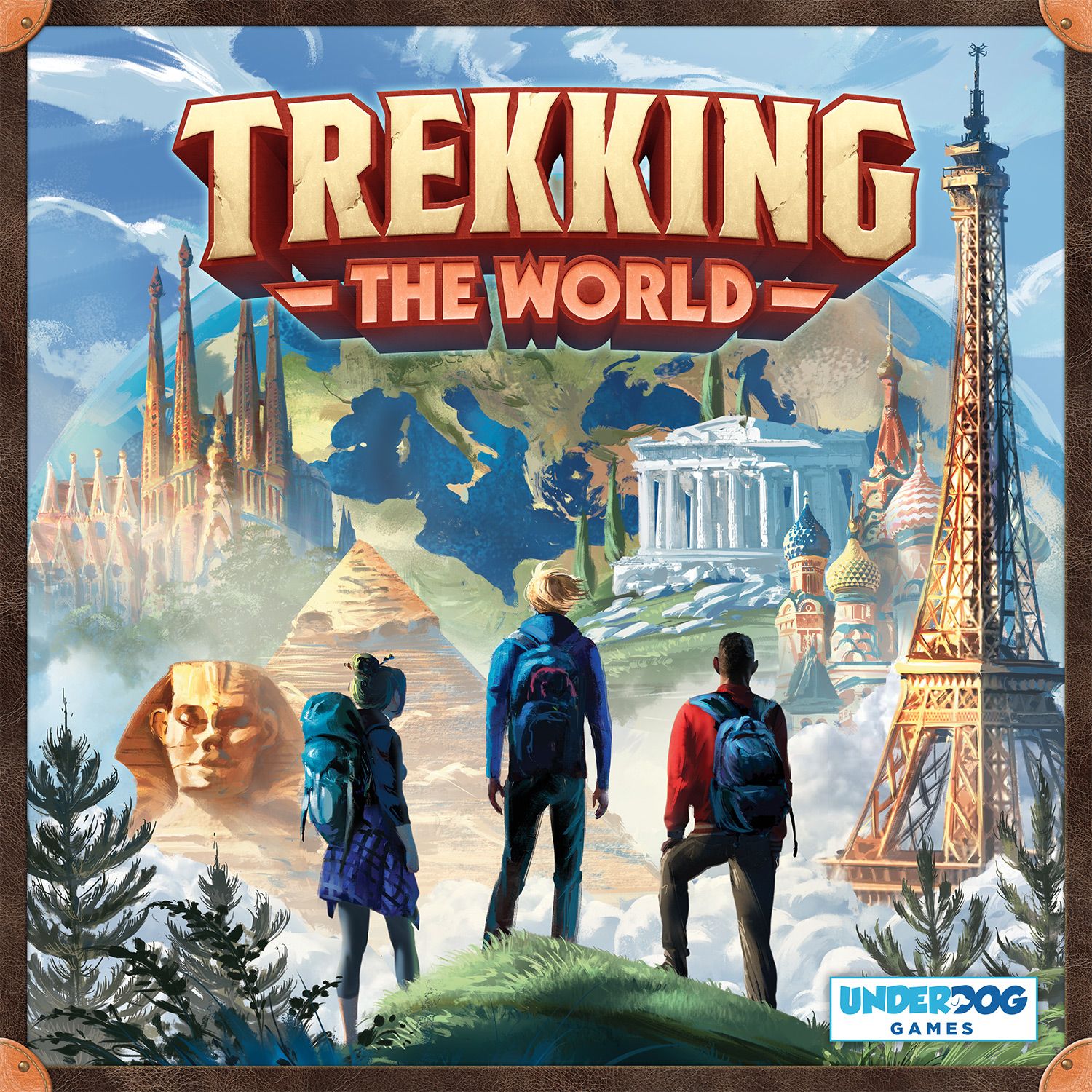
I first heard about underdog games while watching a board game documentary called Gamemaster on Amazon Prime. I loved the story behind Underdog Games, and how they first published Trekking the National Parks. When I was presented with the chance to check out their newer title, Trekking the World, I knew I couldn’t pass it up.
What’s in the box?
- 1 game board illustrating a map of the world
- 5 trekker meeples of different player colors
- 5 suitcase mats matching each player color
- 48 souvenir cubes, 12 of each color
- 18 3 point victory point tokens
- 12 5 point victory point tokens
- 48 destination cards
- 4 souvenir tiles
- 10 region bonus tokens
- 75 trek cards
- 12 Journey cards, 6 of each type
- 1 gametray insert including a removeable trey for victory point storage
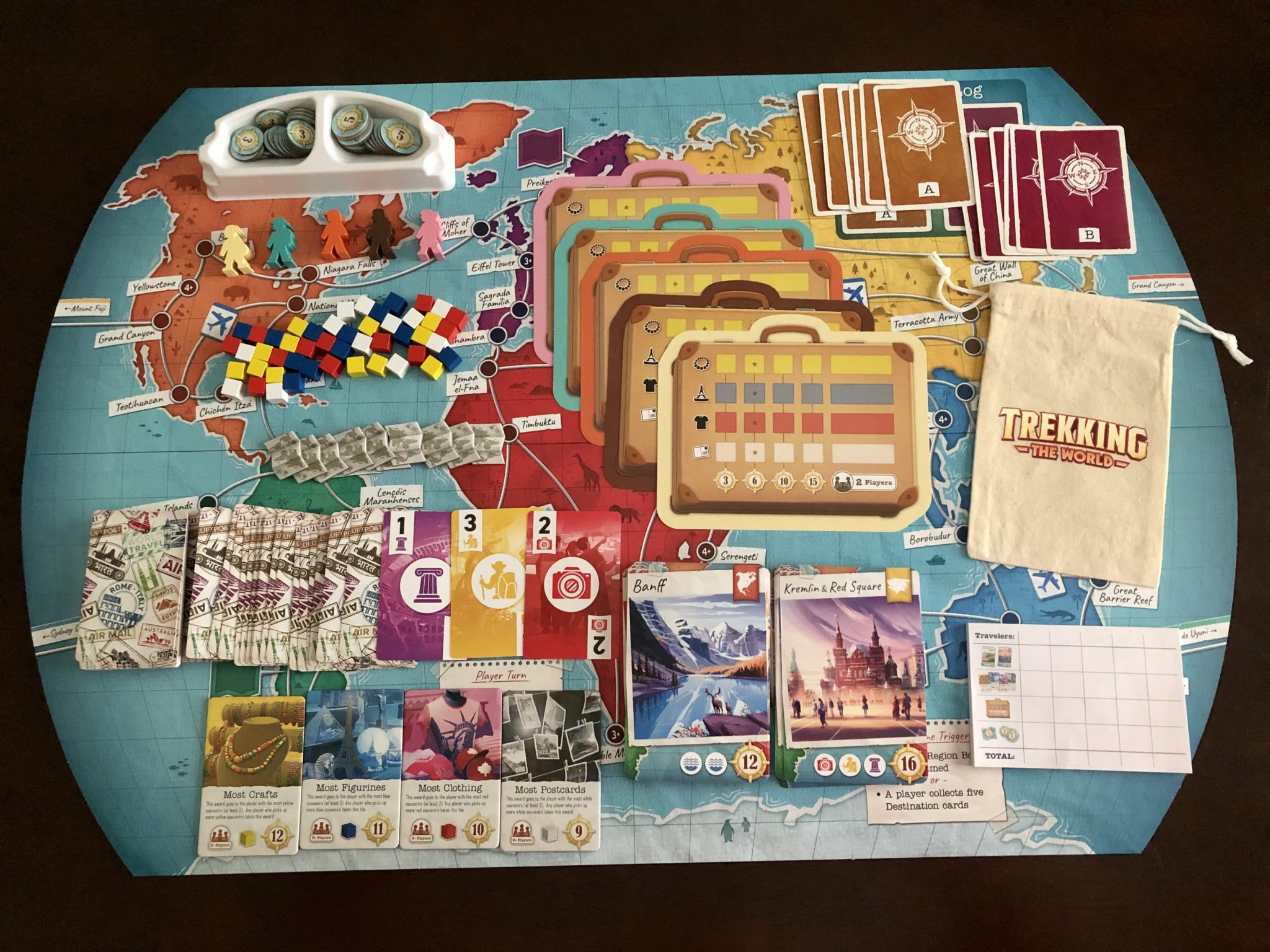
How’s It Play?
Some people have described this game being similar to Ticket to Ride with some added complexity and racing to get certain cards before others do. I’ll let you as the reader decide if that’s true or not but the game plays similar to other games that have the same mechanics, except the theme is a little different.
Players are traveling around the world collecting souvenirs and also trying to take tours of some of the most famous sites.
Players start with 3 cards from the Trek deck. These cards have a number that relates to how much spaces you move on the board when using it, and an icon or color which indicates the type of card needed to take a tour or take a journey (described later).
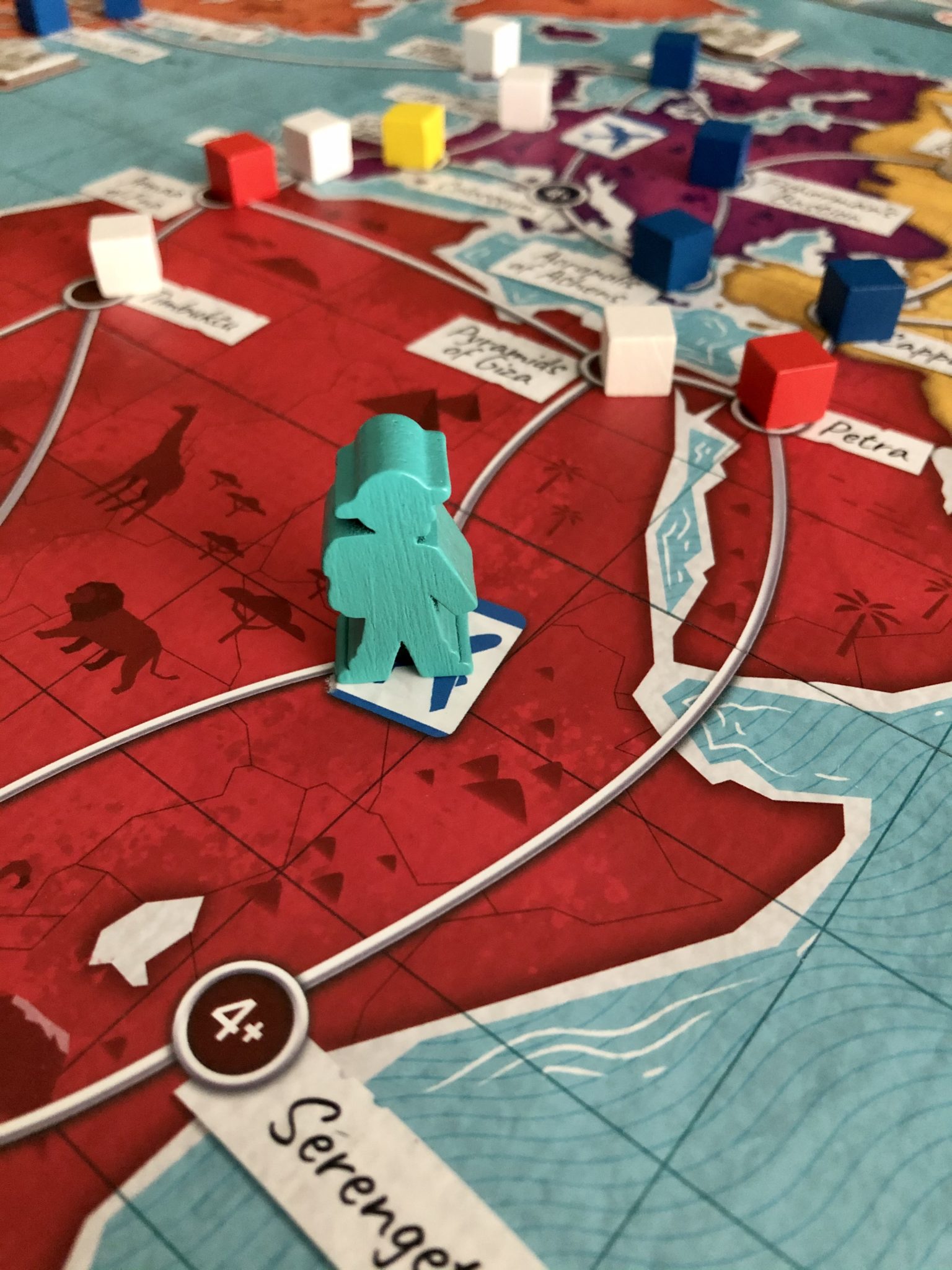
Move
On a player’s turn they will move on the board by discarding at least one trek card and a many as they would like to move their trekker meeples to a new location the exact number of spaces listed on the cards they discard. This step is mandatory for all players, so if a player starts with at least one card, they will need to use it to move. Players cannot move back to a location on the same turn and cannot move through other players. When a trekker meeple ends their turn on an airport, their next turn they can travel to any other airport of the 5 others located on the board with their movement and continue until they use all their movement up for that turn.
Souvenir cubes are added to a player’s suitcase in the leftmost open slot matching its color. When a player places a cube on a slot with a star, that player is now eligible to claim the most souvenir tile of that type if they currently have the most. Other players can take tiles away from other players when they gain more cubes of that type being the player with the most of that type of souvenir. Souvenir tiles each award different points depending on the type of souvenir.
If a player ever collects the last souvenir from one of the map’s six separate regions, they claim the region’s bonus token. This token has a hidden point value that you will get at the end of the game.
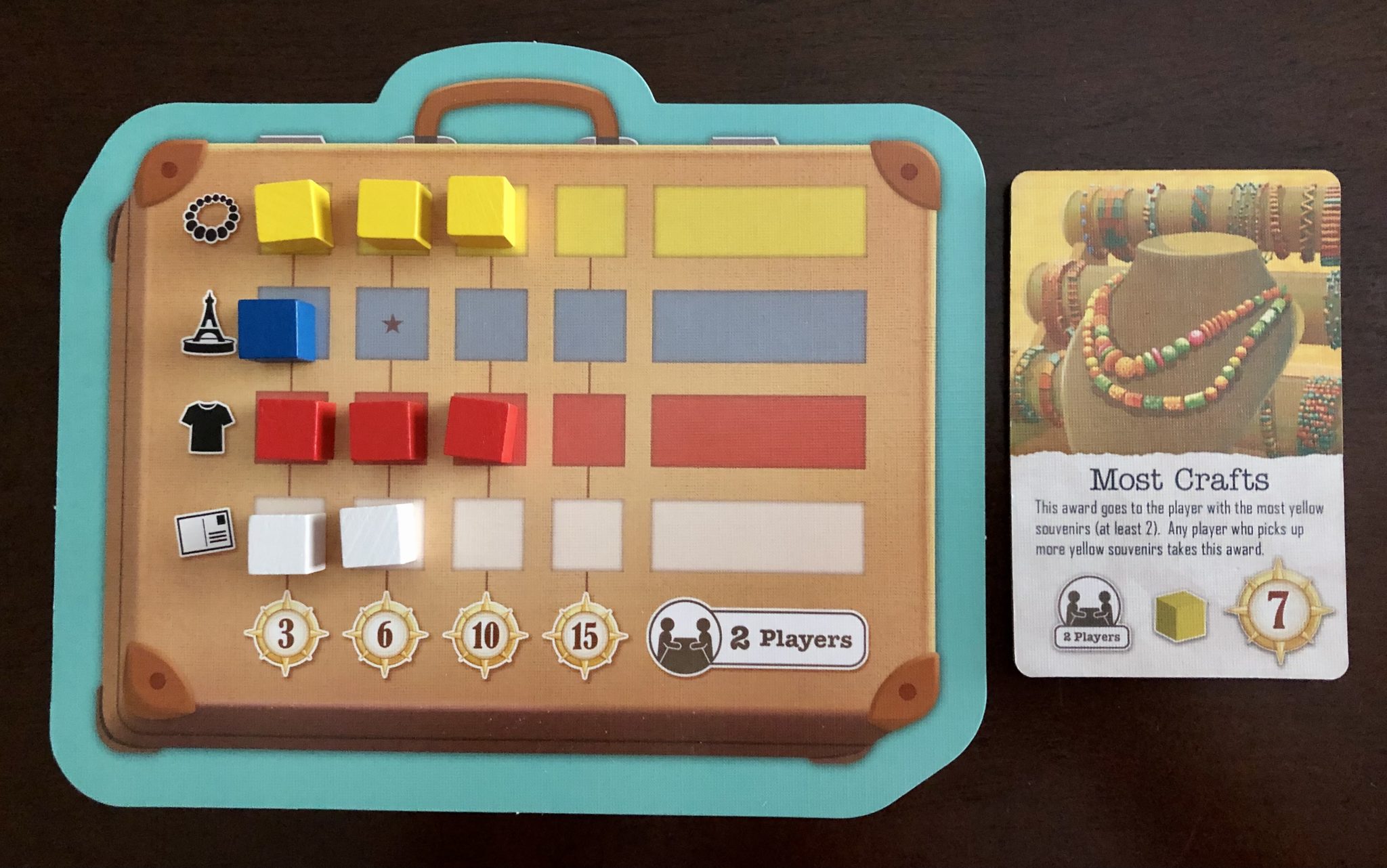
Choose
After the mandatory movement (if you have at least one card in your hand), you can choose 1 of 3 other actions to take.
Draw Two – take 2 trek cards either from the faceup cards or the top card in the facedown deck. Cards are immediately refilled when a faceup card is taken. These cards might be taken for planned movement with the number listed on the card, or for its color or symbol that might be needed to take a tour.
Take a Tour – there are 4 destination cards faceup at a time. Each card is connected to a location on the board. To take a tour and to claim the destination card worth points listed on the bottom you will need to end your movement on that location on the board and pay the number and type of trek cards listed on the bottom of that destination card. If you take the destination card furthest to the right, you collect a 5-point victory token, the card to its left (3rd from the left) will give you a 3-point token in addition to the destination card. The other 2 destination cards on the left will only reward players with the card. So, players will be incentivized to go for the cards on the right. When a card is taken, all cards will slide to the right filling in previous spots and a new card will be flipped out filling the last spot.
Journey – 2 journey cards are laid out randomly at the beginning of the game. With this action, players will need to discard a pair of cards with matching icons, and then take the action listed on that card. Actions vary but can help with strategy by either setting a player up with movement on the board, gaining cards, gaining points, or a combination of these that might be better than other choices like straight out drawing 2 cards.
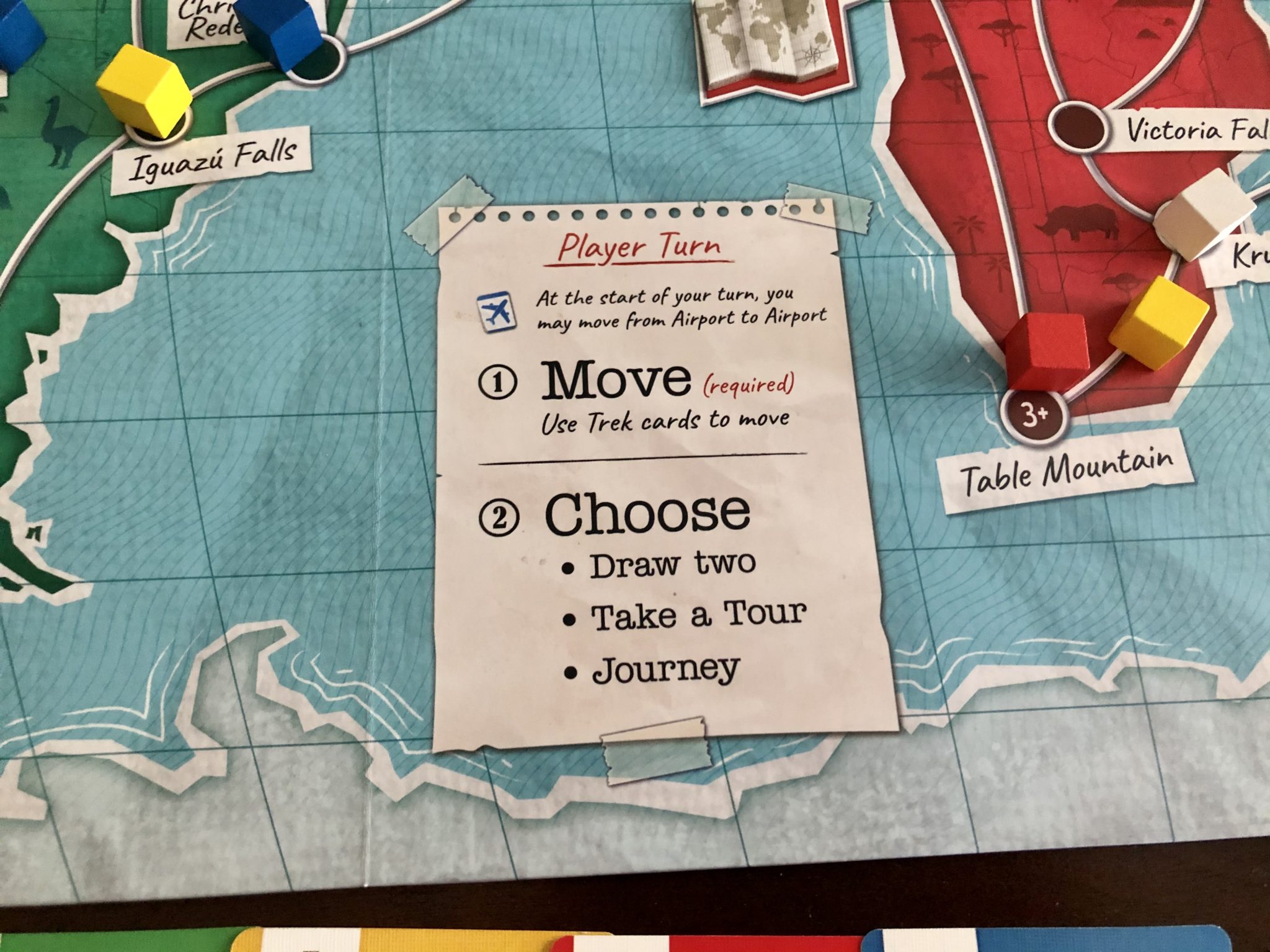
So, the game will go in a pattern like this:
Player 1 Moves
Player 1 draws 2 cards, takes a tour, or takes a journey
Player 2 Moves
Player 2 draws 2 cards, takes a tour, or takes a journey
Player 3 Moves
Player 3 draws 2 cards, takes a tour, or takes a journey
Player 1 Moves
Player 1 draws 2 cards, takes a tour, or takes a journey
And so on….
The game end if triggered by 1 of 2 ways. Either 5 of the 6 region bonus tokens are claimed, or a player tours their fifth destination card. When one of those 2 things occurs, that player will finish their turn and the game ends.
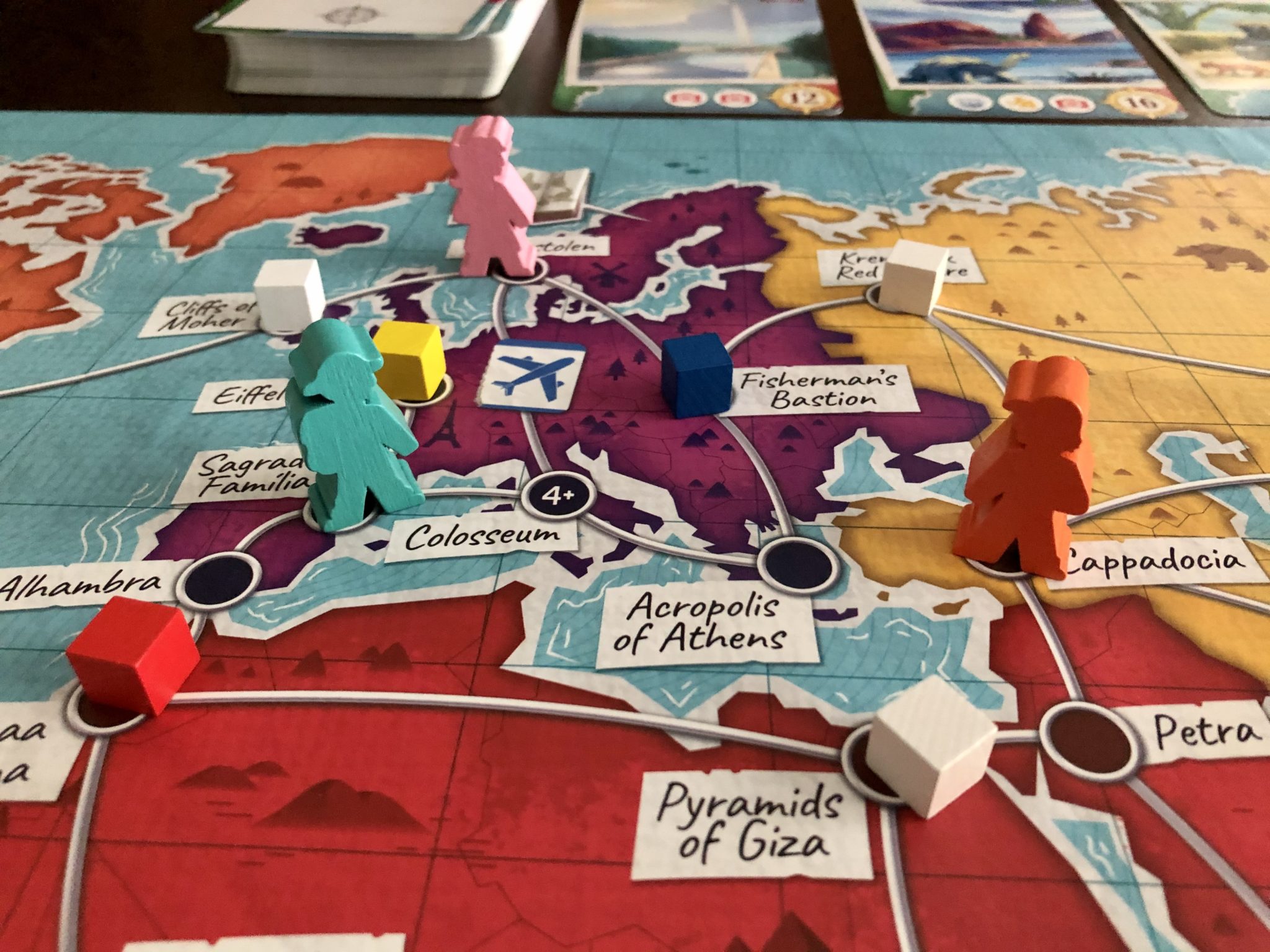
The Strategy
There are several ways to score points and do well in the game. Knowing how you score points is the first thing to know.
At the end of the game players will visit their suitcases with all their souvenir cubes placed on top. Players will see how many sets of cubes they have. A set consists of 4 cubes, one of each color. Players will score the victory points under the rightmost set of souvenirs in their suitcase. In addition, players will score points from their destination cards, souvenir tiles they ended up with, region bonus tokens, and any victory point tokens gathered from taking tours.
Go after the rightmost destination card – With this in your strategy, you will gain an additional 5 points for each card you claim this way. If you ended up claiming 5 destinations all in the rightmost slot, you would have an additional 25 points. This is a great strategy to strive for, but it requires aa lot of planning and some luck. You are not the only player going after some of these destination cards, but you can also study out and anticipate other player’s moves.
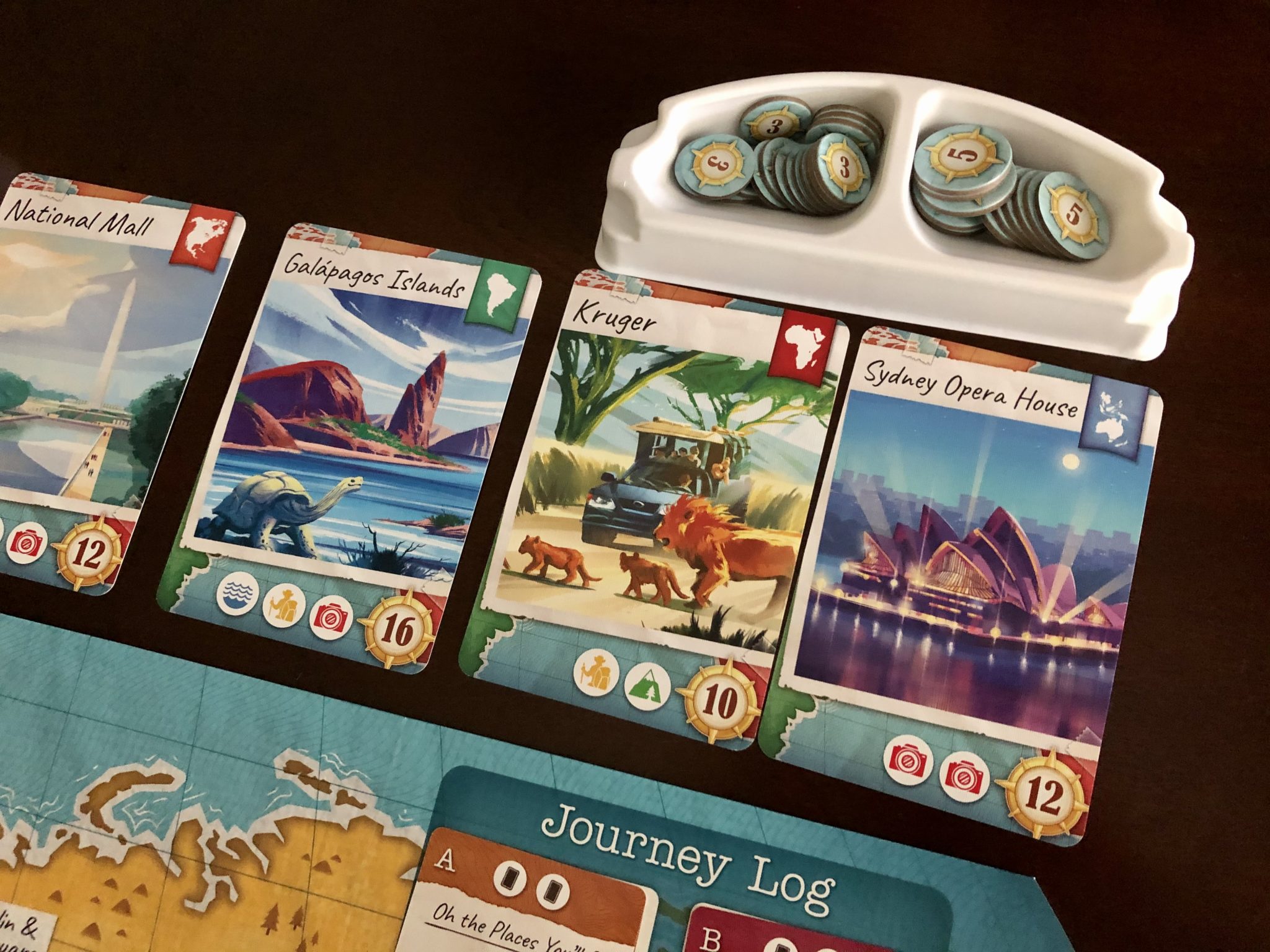
Take advantage of the Journey cards – Plug these options into your strategy or compare their payout to your other options. Many times, you have the choice to either take 2 trek cards or if you have a pair of matching icons, you can exchange them in to take one of the journey card actions. Players should calculate what they want to do in the next handful of turns and see if any of the journey cards can help them achieve those plans.
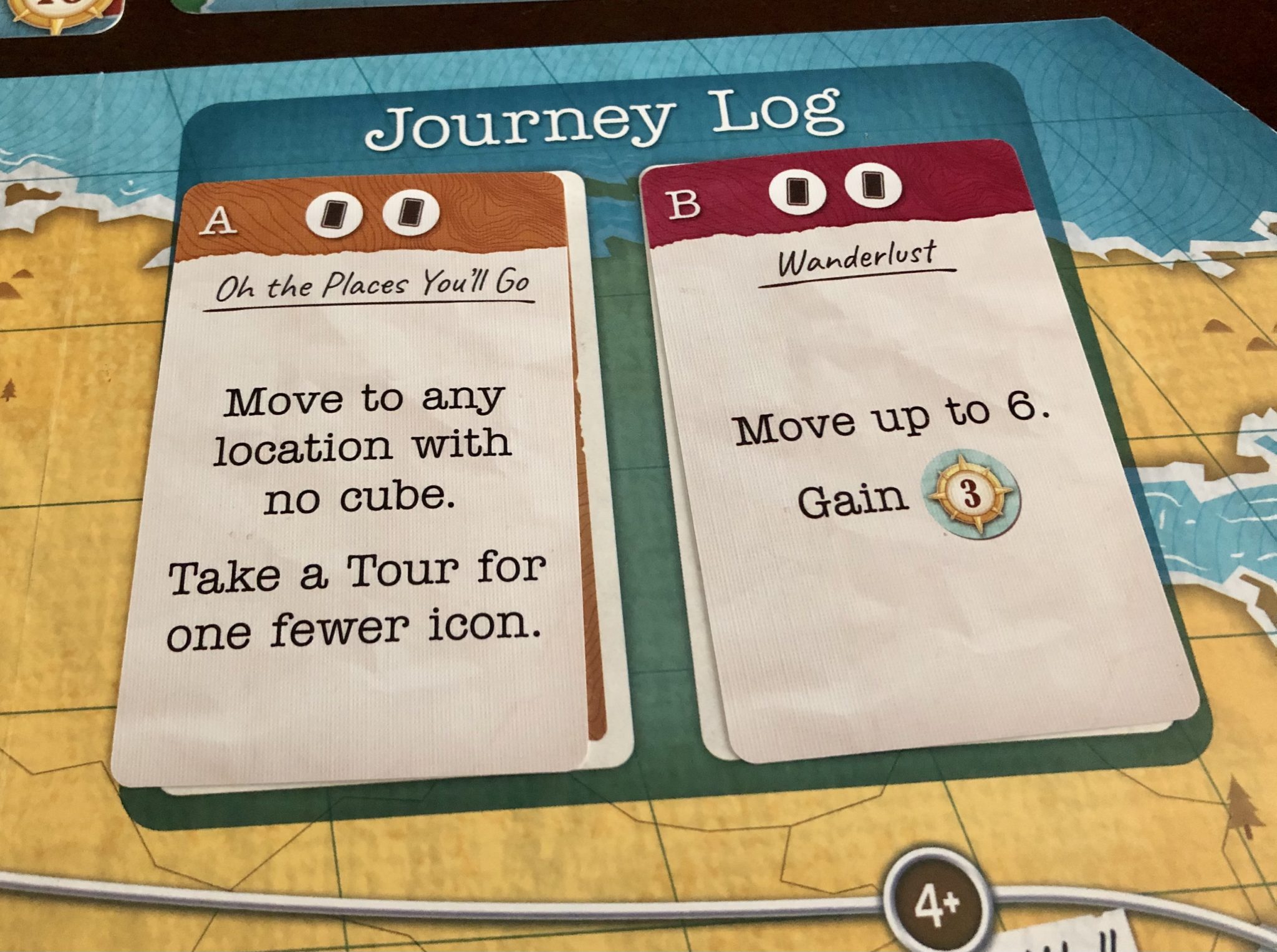
Region bonus tokens – Players should be mindful of the board like where players are located on the board, and what souvenirs are left out. Grabbing these region bonus tokens can be an easy way to continue with your other strategies while picking up some easy points.
Souvenir tiles – Having the most of a certain type of souvenir might be worth seeking out especially if those cubes are placed on locations that benefit you. Player should pay attention to how many souvenirs of each type all players have because if you only need to grab one cube of a certain type to snatch one of those tiles, it’s probably worth it.
Sets of Souvenir cubes – Players should be mindful of which cubes they grab throughout the game. Balance between having the most of a certain type with also trying to maximize your sets would be an ideal strategy. Again, pay attention to your board and if the color doesn’t matter for anything else, make sure you make it matter for your sets.
The best strategy is a combination of all the above. Players should calculate each decision, figuring out if one move over another might produce something better than another. Players should initially focus on the destination cards, and while doing that can either try to gather souvenir tiles of cubes, they can collect a lot of, or gather a variety of each type aiming for the most complete sets. Players should continue to adjust their plans and strategies during play. Keep an eye out for region bonus tokens, and anticipating other players taking certain tours so that you can grab some extra points when those cards move to the right.
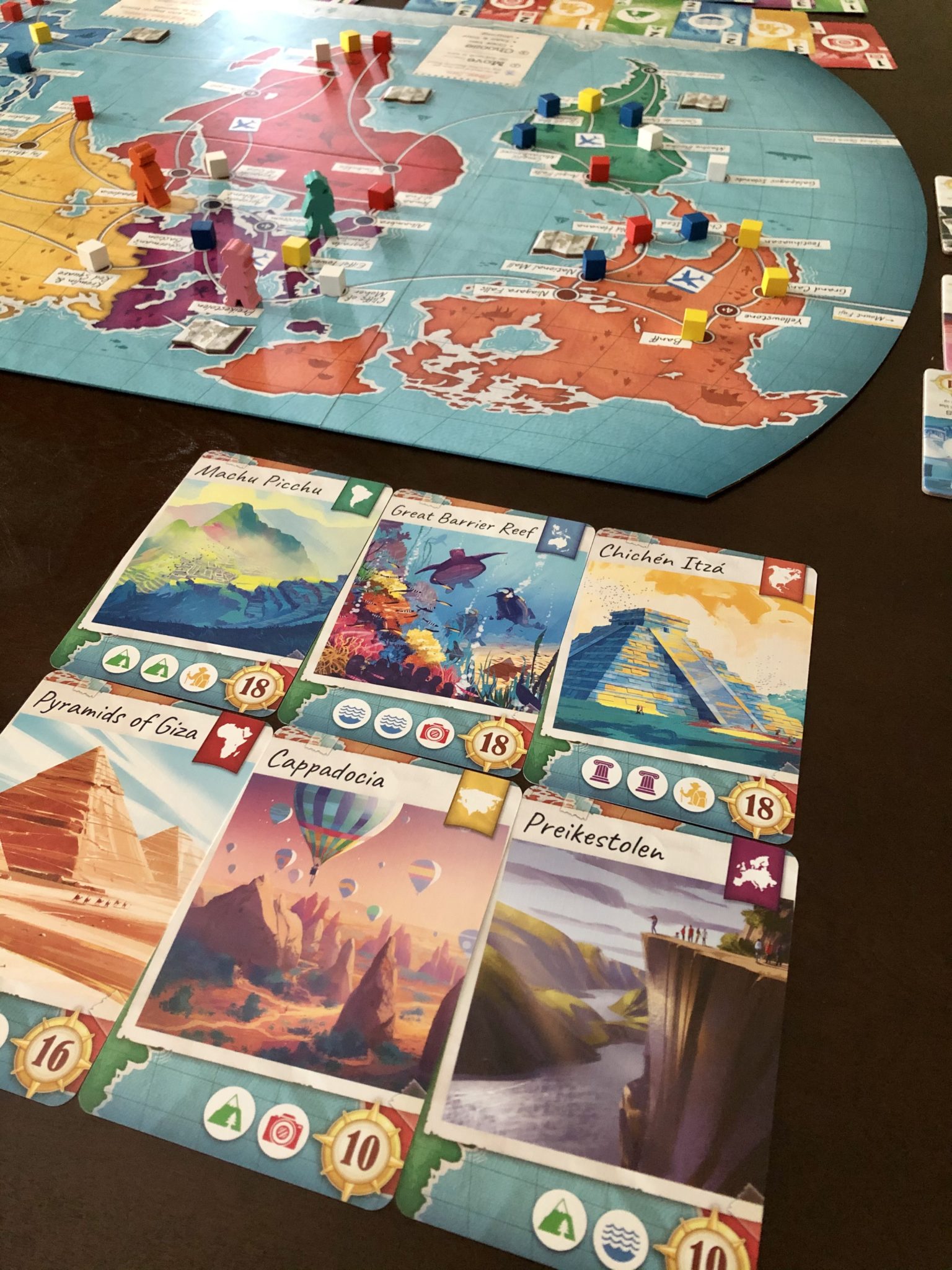
There is no one specific way to win this game every single time, which is great know. Strategy is very important in winning and doing well in this game, there is still some luck that comes out with the randomized card draws, but in this game a good strategy will win over luck every time. Even though strategy is important in the game, what is more important is having fun and if you really want to take a tour oof a specific location because it means something to you personally, then hurry and take that beautiful tour that you will remember for your lifetime!
The Verdict?
The game is very fitting for me and my family. We like how the rules are not complex and its really easy to know what you can do on your turn. While saying that, its complexity hides within which action, or how to use each action in the best possible way to setup for your next turn. Since many compare this game to ticket to ride, even though I personally don’t get the same vibes from them both, it has more complexity hidden in its gameplay than Ticket to Ride does. Choices tend to be more important in this game because it affects everything you can do for the following. So, it has a great combo of easy rules to remember with a more complex way to organize a strategy within those rules.
I have never played Underdog’s first game, Trekking the National Parks, but I did read up on it and know how to play it as it is similar to Trekking the World. It seems that Trekking the World took all the complaints from Trekking the National Parks and changed them to make Trekking the World a better game mechanically. In Trekking the World, you have to move on your turn if you can, making it harder to plan out routes and land on certain locations which is different in their first game. Trekking the World includes regions and regional bonus tokens. This gives the game a better timer and creates a way to score some points or deny other players those points. Trekking the World rewards players with souvenir tiles during the game helping track who has what and helps players remember who is in the lead with those rewards. Trekking the World added suitcases to help organize souvenirs better and journey cards to change the game just a little bit each time you player the game. I strongly feel like these changes have made this game better.
The game is produced very well with Gametrayz inside that makes it very easy and quick to setup and tear down. I really appreciate the removeable tray that houses the victory point tokens. You simply need to place the tray above the right most destination cards, and your good to go.
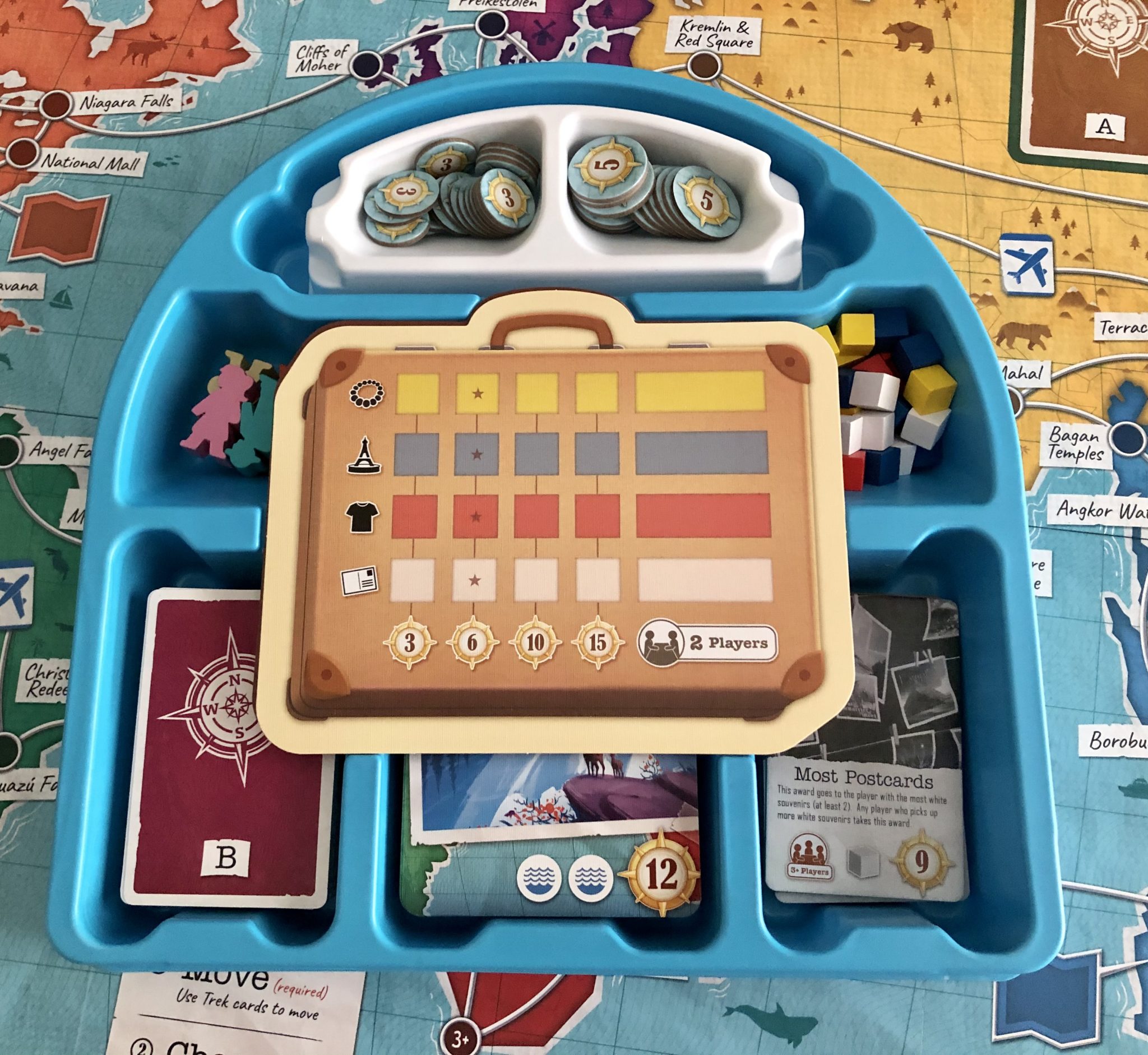
There is a lot to like about Trekking the World. But you should know that the game was designed to be mainstream. The game has been polished and plays very smoothly, which also tends to make the game less exciting. For those who play a lot of board games, the game will feel very familiar and will appeal to those who like family weight gateway games. These feelings aren’t a bad thing and may be considered a very good thing for the game, but players that want to know what to expect should know what they might be investing in.
[rwp_box id=”0″]
You can pick up Trekking the World at Underdog Games, Amazon, or at your FLGS.
Images and Review Copy by Underdog Games
Have strong thoughts about this piece you need to share? Or maybe there’s something else on your mind you’re wanting to talk about with fellow Fandomentals? Head on over to our Community server to join in the conversation!

